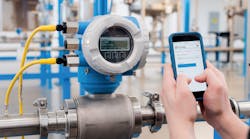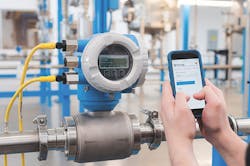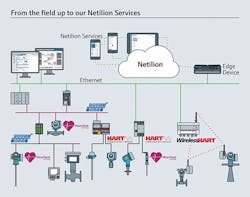A typical plant incorporates instruments from a variety of vendors based upon the site preference for a specific technology such as flow, level, pressure, temperature, analysis and so on. As long as the manufacturer provides the tools necessary for commissioning and diagnostic evaluation, for examples DTMs or DDs, the instrument can be integrated into the automation system.
This article is part of our monthly Automation Zone column. Read more from our monthly Automation Zone series.
However, many maintenance technicians and plant engineers view system integration as a means to interconnect various automation systems and software platforms via digital data links, with instrumentation often not considered a critical component. Many think instruments simply need to support the correct communication protocol employed by the unit or site so the automation system can receive the primary process variable output as well as alarms or warnings.
The problem with this definition of system integration relative to process instrumentation is that it no longer addresses the requirements of a modern process facility, specifically the trend towards the industrial internet of things (IIoT) and cloud-based analytics.
Digital, smart process instruments are increasingly deployed in industry, currently numbering in the tens of millions, and are providing an incredible amount of information that is of immense benefit to a wide range of host systems and applications, such as maintenance management, asset information and health management, inventory control, and enterprise resource planning.
Because of the immense amount of data, and the problems involved in managing it, we estimate that 97% of this data is not being used. Instead, automation systems use the flow, pressure, temperature, level, and other data needed to monitor and control the process, and typically discard the status, diagnostic, and other data.
Figure 1. Using a tablet or a smartphone, a technician can access an instrument and download its instruction manual.
Source: Endress+Hauser
With many plants and facilities focusing on the simplicity, safety, and productivity of operations, fully utilizing the data available from smart instruments is required. The good news is this data can be brought into plantwide maintenance management and health monitoring systems. It just requires a little system integration.
The first step in this process is an installed base analysis to confirm exactly what instruments are in service. This is typically accomplished using a third-party service provider or plant personnel, whichever results in the least disruption to normal maintenance activities. Since most modern instruments are equipped with state-of-the-art identification systems—namely bar codes, QR codes, or labels that can be scanned—identification via a vendor or product ID is simple and quick.
Next, all the documentation associated with the instrument—such as an instruction manual, troubleshooting guide, etc.—needs to be uploaded into the maintenance management software. If the necessary instruction manual or troubleshooting guide is not readily available, in most cases it can easily be downloaded from the instrument vendor’s website. The ability to locate the correct documentation in the maintenance management software increases efficiency and reduces the time required to locate printed manuals.
The instrument identification discussed earlier can go one step farther and allow a technician to locally access the required maintenance or troubleshooting information through a smartphone or tablet.
After completing these two steps, you now have access to a large amount of additional instrument and process data, well beyond the primary process variable, which can be used to improve operations by making the right connections.
Figure 2. In modern integrated instrumentation systems, data from process instruments is sent to a control system, but it may also be sent to instrument diagnosis and maintenance software. Source: Endress+Hauser
Smart digital instruments can communicate with control and monitoring systems via different interfaces, including Profibus, 4-20mA HART, WirelessHART, EtherNet/IP and other protocols. However, many eventually connect to an industrial Ethernet-based network, where the data can be acquired by a specialized edge device.
- Read "Sick instruments: Seeking great performances from your assets? Don't neglect instrument maintenance"
In some cases, legacy two-wire instruments can’t connect to any industrial Ethernet network, and data available from each instrument is limited to its HART values. It’s likely that a particular process area has multiple instruments of this type. To get this data onto a digital highway, an industrial Ethernet gateway can be used. Without affecting data going to the control system over the two-wire connection, the gateway extracts all the HART data and transmits it to the Ethernet highway.
Part of the systems integration process, then, is to ensure data from various instruments is extracted from these networks and sent to maintenance management software hosted on premises or in the cloud.
There’s no need to implement a massive, plantwide instrumentation integration system project right away. Most vendors provide a “startup kit” that allows a plant to try out the concept. Using this type of approach, a plant can start small and work its way up as gains are realized, eventually encompassing all instruments and analyzers.


